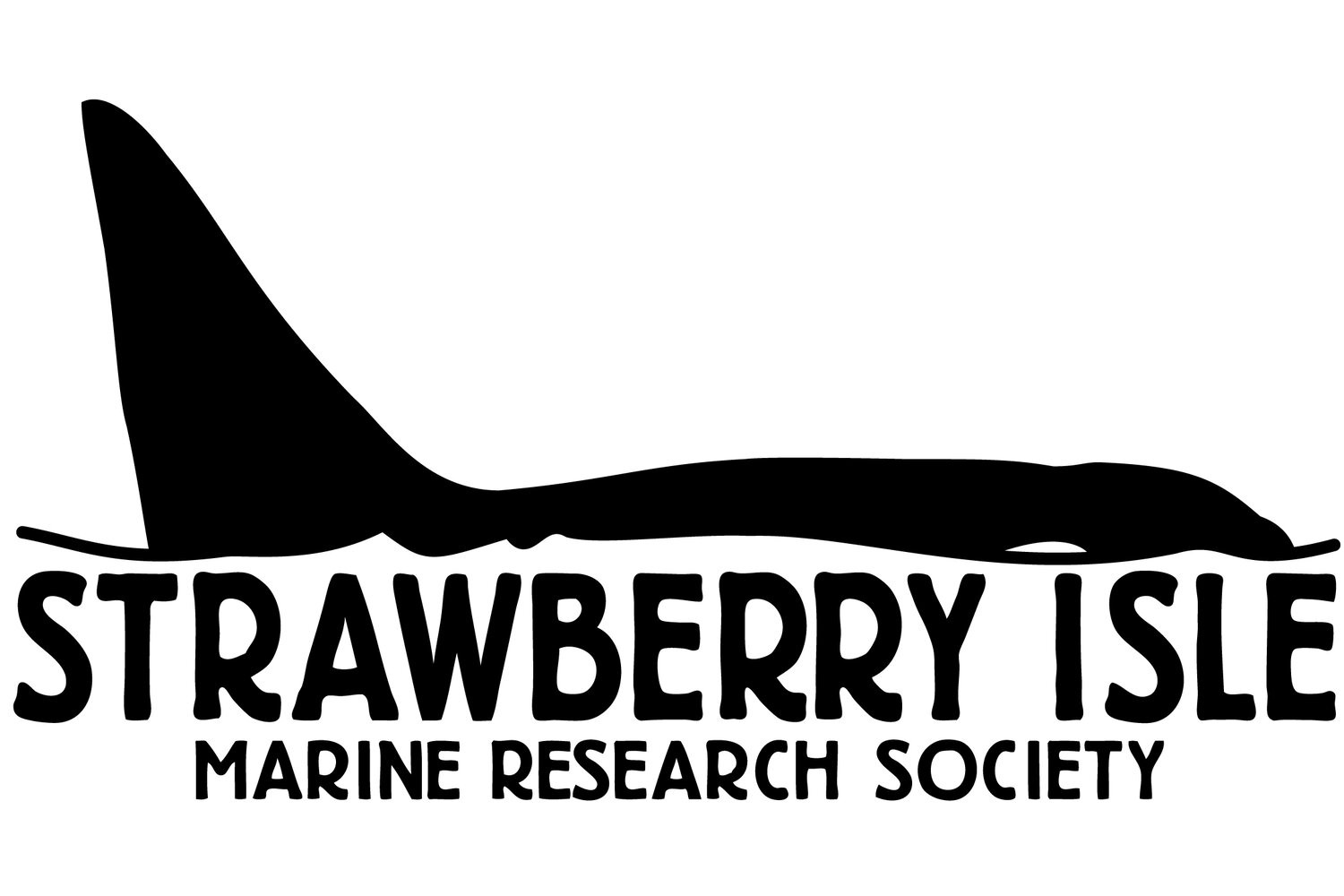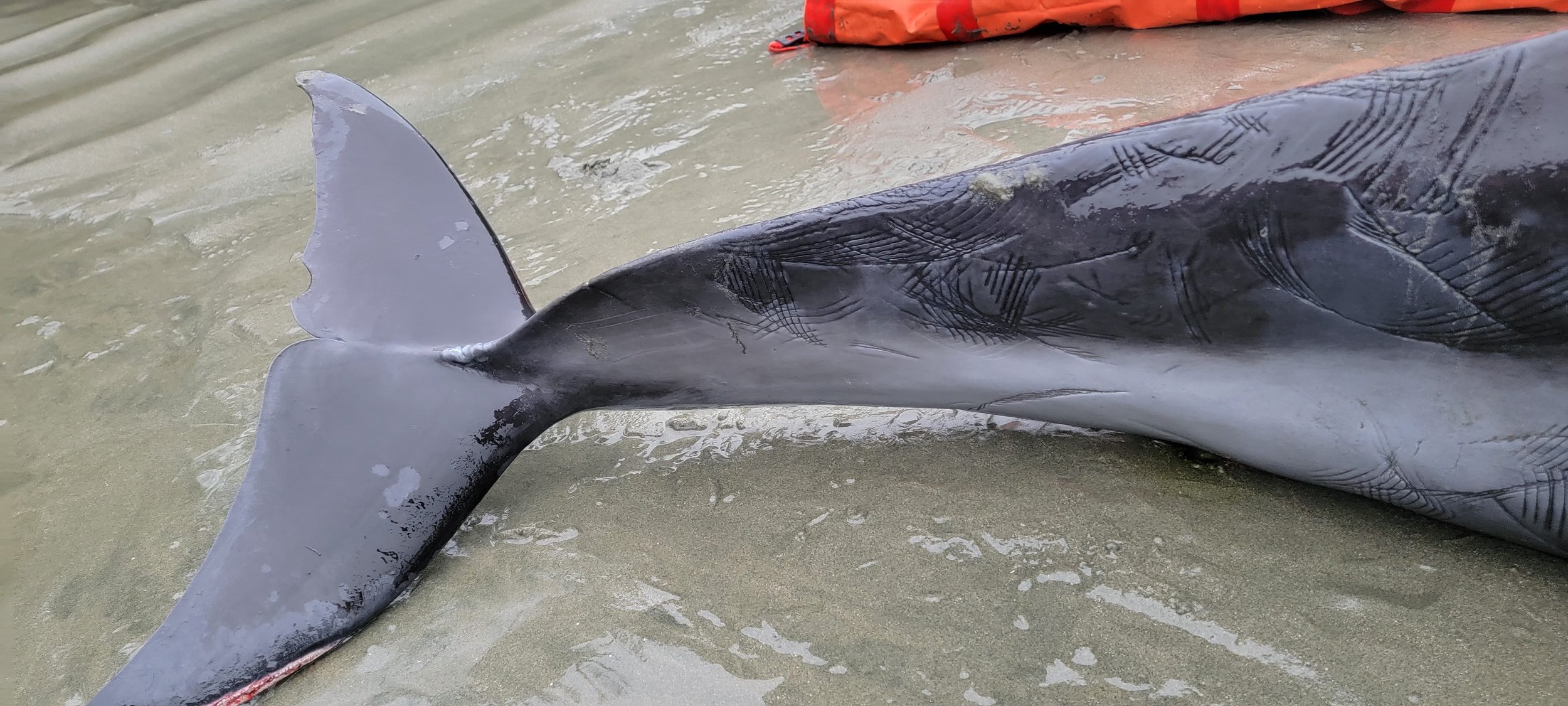A Killer Whale of A Day
/Photo by Ross Reid
There is nothing quite as thrilling as watching a black dorsal fin slice through the surface of the water, rising up to six feet. Ripples and the powerful sound of blows echo through the silence left in their wake, as you realize that all of the other animals around you are hiding from this awesome predator (if they’re lucky, that is). It’s enough to raise strong emotions in even the most seasoned of sea-farers. Orca!
As the undisputed rulers of the sea, these apex predators are at the top of the food chain, meaning they have no predators. They prey on a wide variety of species, ranging from small schooling fish like salmon and halibut, to larger marine mammals like seals and sea lions, and even adult baleen whales. Although their diet depends to some extent on where they live, it is mostly determined by culture (in other words their learned behaviour). Orcas live and hunt together in cooperative pods, or family groups, and their hunting strategies vary from region to region depending on their chosen prey, passed down through multiple generations.
In our waters off the Pacific Northwest coast, there are three main orca ecotypes: Resident, Transient or Bigg’s, and Offshore. Residents exclusively eat fish, mainly salmon, Transients primarily eat marine mammals and squid, and Offshores eat sharks. Orcas have a diverse range of hunting tactics, specialized for their chosen prey, including ramming and tail slamming for pinnipeds (seal and sea lion), prolonged high speed chases for porpoises and drowning after ramming and biting for baleen whales. The ‘Wave Wash’, the ‘Karate Chop’, The ‘Carousel’, The ‘Pod Pin’, The ‘Blowhole Block’, The ‘D-day’ (a.k.a. ‘Storming the Beach’), their incredibly theatrical hunts have earned them the name Killer Whales.
For those that are being hunted, fleeing to shallow waters is sometimes the only means of evading the attack. Unfortunately, this tactic also holds the not uncommon risk of becoming beached on shore during the escape. This is what likely happened on Friday, November 4th, when a live stranded Pacific White-sided dolphin was reported in the Pacific Rim National Park Reserve.
Our team arrived on scene, equipment in hand, to meet Parks Canada wildlife officers doing initial assessments. The animal looked to be in fairly rough shape and in high distress, however was still thrashing about and actively breathing. Severe scarring left by teeth, also known as rake marks, from a killer whale were evident on the dolphins body, indicating a recent attack.
A collaborative decision was made, by Parks Canada and DFO officials, to attempt a re-floation rescue. It was our hope that we could get this animal back in the water in time to give it a second chance at surviving. We were lucky to have been trained for this exact scenario earlier this year, and had the equipment ready. Moving efficiently and safely, we put the dolphin in a sling and waded out into the water in our drysuits. It can take some time for animals to adjust to being back in the ocean, but we could tell the dolphin’s state was rapidly declining. After about 30 minutes of supporting the animal in the sling, it was clear it wasn’t going to make it. With heavy hearts, we brought the deceased animal back onto the beach where it could be left for nature to take its course.
These events, although not very frequent, are natural occurrences that sometimes result in not so happy endings. Despite the tragedy, we are very proud of the successful response effort and collaborative teamwork displayed by our West Coast Vancouver Island Marine Mammal Response Network. Through years of collaboration, training, and resource building as part of this network we were able to initiate a fast, efficient, and safe response guided by knowledgeable professionals.
Our thanks to the team at Pacific Rim National Park Reserve for coordinating and leading the response plan, and for Fisheries and Oceans Canada for their guidance and insight. Thanks also to SIMRS volunteer Ross Reid for calling it in to us and lending us a much needed extra hand in the response effort!
If you see a marine mammal incident anywhere in BC please immediately call the Marine Mammal Incident Hotline at 1-800-465-4336.
For incidents that occur within Pacific Rim National Park Reserve, you can also call the Park Emergency Dispatch at 1-877-852-3100.
SIMRS can be reached at 1-250-266-9090.
Written by Sophie Vanderbanck and Karyssa Arnett, Sophie is the Programs Coordinator and Operations Assistant and Karyssa is the Executive Director (the SIMRS team of two!).Learn more about our Marine Mammal Rescue and Response Work
We will be sharing more stories like this from our community and insights into these incredible animals in a new online eBook!
If you have a story or photo of your own orca encounter that you would like to submit, please send them to sophie.vanderbanck@simrstofino.org.






